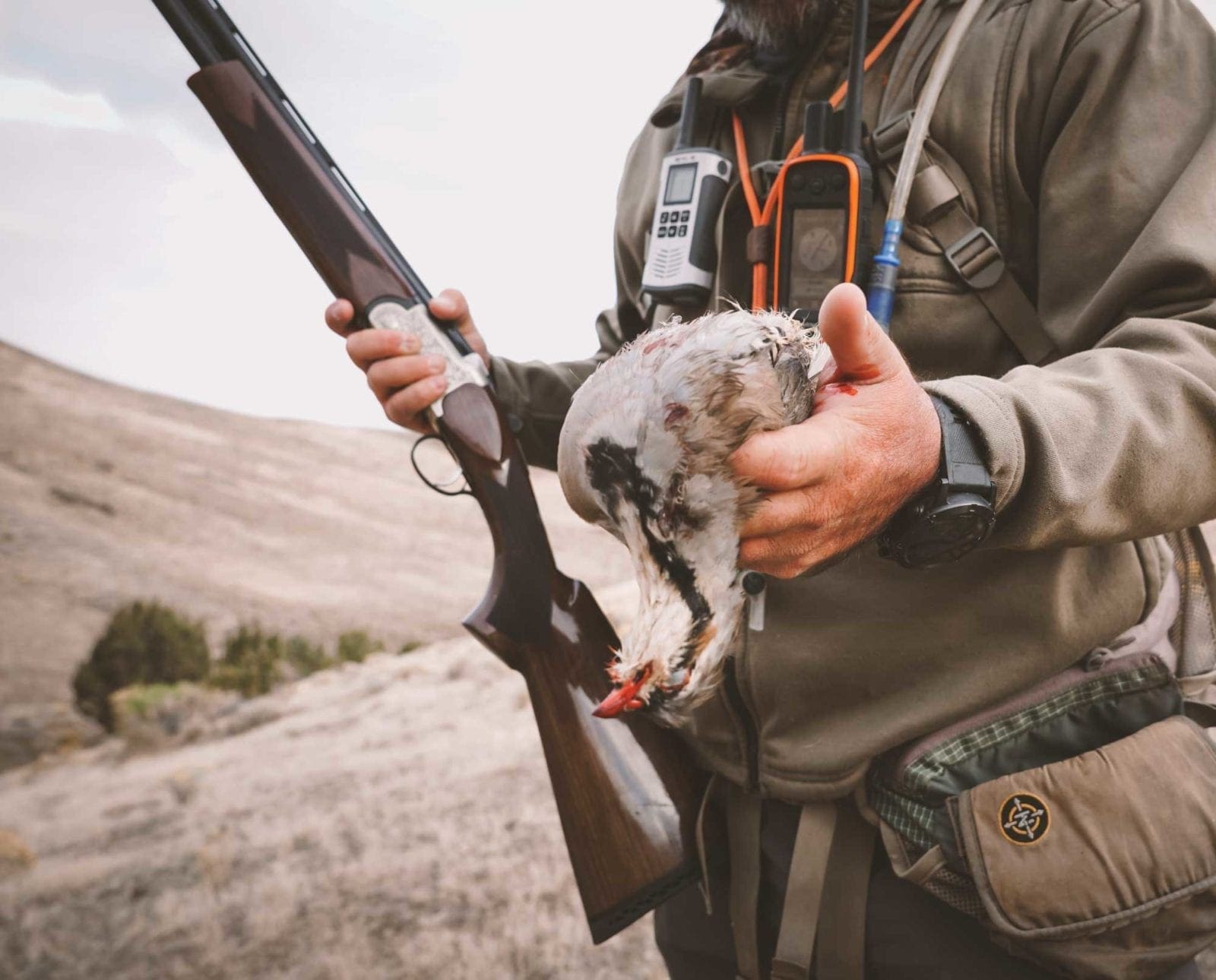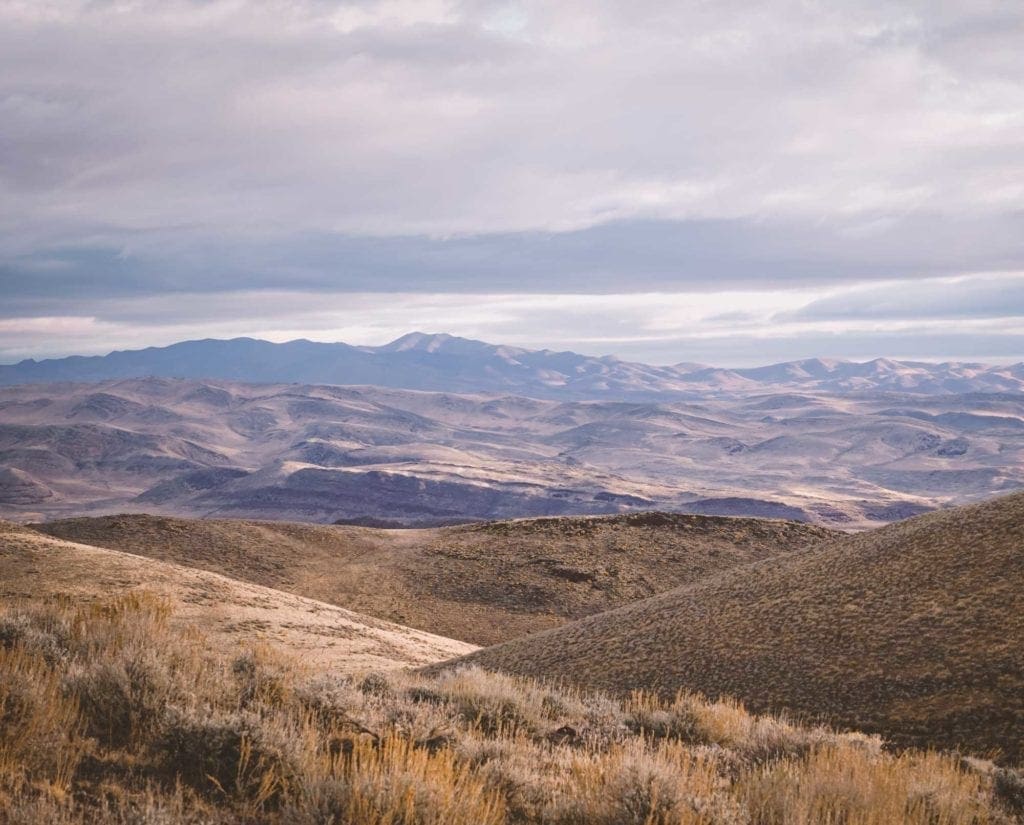Home » Partridge Species » Chukar Hunting » How to Find Chukar by Water, Cover, and Food Source
How to Find Chukar by Water, Cover, and Food Source

Damon Booth was raised in rural Winnemucca, Nevada where he…
A brief look at finding good chukar habitat with Chukar Chasers
Chukar (not chukars) are native to Eurasia and have been introduced into North America, the Hawaiian Islands (so yes, pack your blaze floral upland vest) and New Zealand. The Western states include Arizona, California, Oregon, Washington, Idaho, Nevada, Utah, Colorado, Wyoming, and Montana, and are are also found in British Columbia. The only trouble is actually finding them in those areas.
The chukar hunting equation for increasing your luck in tracking down the elusive chukar partridge, or rather those red legg’ed devils, begins with finding water. Water is gold in the arid West. You’ll need to start with a legitimate water source such as a lake, reservoir, stream, creek, pond, water trough, or wildlife guzzlers, also known as water catchment systems. For those who are unfamiliar with wildlife guzzlers, many state wildlife, fish and game departments, along with outdoor and wildlife organizations and volunteers, construct these self-contained precipitation collection systems in areas lacking a reliable and significant water source for wildlife to thrive, or even to survive.

Water is the Most Important
Remember, water is the Holy Grail. Find the water source and chukar will likely be in the area. This, however, will change once the weather turns, with the late spring and fall rainstorms and when the winter snowfall covers the ground. Any precipitation will cause the birds to spread further from the main water source, further from the grail.
Chukar Still Need Cover
Second, find cover. Without protection from nest predators such as magpies, ravens or snakes, as well as predators of young and adult chukar such as bobcats, badgers, mountain lion, snakes, hawks and falcons, chukar do not stand a chance. Chukar habitat is also vital to protect chukar from those chasing them and putting lead shot in the air–or for those Californians, lead-free loads in the sky. Cover comes in many forms, but it will primarily consist of robust vegetation, high grass, sagebrush and rock outcroppings. These birds like the high country and high rock areas to perch up on the rimrock, sunbathing and glassing for predators, and laughing (wait till you hear one) at those foolish enough to hike the uplands in pursuit of the elusive chukar.
Chukar Have to Eat
Lastly, find food. We cannot survive without it; neither can chukar. Chukar are ground foragers, feeding on green grass, cheatgrass (that damn invasive weed), seeds, thistles, piñon pine, sunflower and even grasshoppers. This is the trifecta necessary to increase your chances to find wild chickens. Remember–the dogs hunt; we just chase the devils for revenge.
Damon Booth was raised in rural Winnemucca, Nevada where he was fortunate enough to be exposed to the uplands at an early age. He grew up chasing chukar alongside his father and behind some of the best birddogs (as every Chukar Chaser says about his/her birddog) which is why he is committed to passing on the the upland hunting tradition to others, especially youth. He now lives in Reno with his wife and birddog, Rye (his "roommates") and escapes to the outdoors in the rural areas and neighboring states every chance he gets.






before too long, only lead-free shot will be available – don’t bother me, nor my old bolt-action, single-shot, 20 ga. – never blame a miss on nuttin’ other than my shootin’ – I tell fellas this: wanna make more shots, take better shots, i.e., never shoot at a bird your dog doesn’t handle perfectly – ditch the stress by never loading till the dog’s steady on point and you’re moving up to make the flush – birds usually flush close and fly straight away…dead easy shots – also lots safer hiking unloaded
The way to find chukars is having a good far ranging pointing dog with a GPS and the ability and willingness to hike miles. There are no fat chukar hunters. And yes, chukars is the proper plural no matter what the author says.
I grew up in southern Idaho and started hunting chukars with my father when I was still in grade school. Here’s the scoop on the bird as I know it. There are lots and lots of marginal chucker areas where you can find birds occasionally. However, the core areas are not that many and include Hell’s Canyon, northern Nevada, eastern Oregon out side Hell’s Canyon and Owhyee County in Idaho and along the lower Salmon River, Idaho. The birds winter kill frequently and winter habitat is critical. Along Hell’s Canyon, and other drainages out here with consistent chukar numbers, the common denominator is they are able to get down lower, out of the heavy snow. They just can not handle snow when it is measured in feet. I now live in the Wood River Valley of Idaho and if we go several winters with low snow, they rebuild pretty good, normally. Then, they die when we get the big, deep-snow winters. Water isn’t as scarce as you might think out here. Creeks and/or rivers are never that far off in Idaho chukar country. To kill wild chukars, you need to be in excellent physical shape and not be afraid of mountain climbing. A pointing dog helps and at one time I owned a Brittany, but I have also shot them over labs and springer spaniels. I use a 12 gauge with expensive ammunition, No. 6 shot, and the plug out. Freak out if you must, but ground-sluicing wild chukars is the norm if you get a chance. Get them anyway you legally can. They’re really tough.